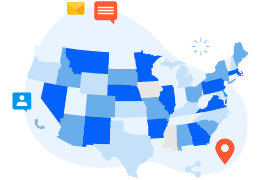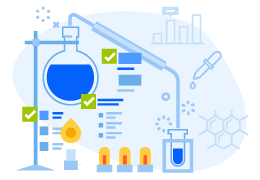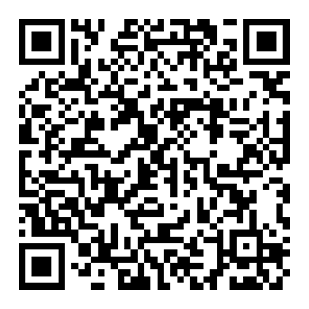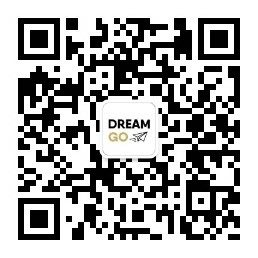专利简介美国康奈尔大学法学院
↑ 标星或置顶“大岭IP”,工作日早7点分享
经典案例 | IP英文 | 实务文章
Picture: 维基百科
Daily IP English 165:
Patent
Cornell Law School
Overview
A patent grants the patent holder the exclusive right to exclude others from making, using, importing, and selling the patented innovation for a limited period of time. The U.S. Patent Act, 35 U.S.C. §§ 1 et seq., was enacted by Congress under its Constitutional grant of authority to secure for limited times to inventors the exclusive right to their discoveries. See Article I, Section 8, Clause 8.
Granting exclusive rights to the inventor is intended to encourage the investment of time and resources into the development of new and useful discoveries. In exchange for this limited monopoly, immediate disclosure of the patented information to the U.S. Patent and Trademark Office (PTO) is required. Once the term of protection has ended, the patented innovation enters the public domain.
Requirements for Patentability
The five primary requirements for patentability are: (1) patentable subject matter, (2) utility, (3) novelty, (4) nonobviousness, and (5) enablement.
Patentable Subject Matter
The patentable subject matter requirement addresses the issue of which types of inventions will be considered for patent protection. Under 35 U.S.C. § 101, the categories for patentable subject matter are broadly defined as any process, machine, manufacture, or composition of matter, or improvement thereof. In Diamond v. Chakrabarty, the Supreme Court found that Congress intended patentable subject matter to “include anything under the sun that is made by man.” See Diamond v. Chakrabarty, 447 U.S. 303 (1980). However, the Court also stated that this broad definition has limits and does not embrace every discovery. According to the Court, the laws of nature, physical phenomena, and abstract ideas are not patentable. The relevant distinction between patentable and unpatentable subject matter is between products of nature, living or not, and human-made inventions.
The traditional rules that “printed matter” and “business methods” are unpatentable have recently been called into question. In 1998, the Federal Circuit held that a system of conducting business can be patentable as a process even though it does not act on anything tangible. See State Street Bank & Trust Co. v. Signature Financial Group, 149 F.3d 1368 (Fed. Cir. 1998). The rule against patenting printed matter still retains its force, although printed matter may be patentable if its relationship with the physical invention is either new and useful, or new and non-obvious.
Utility
The second requirement for patentability is that the invention be useful. See 35 U.S.C. § 101. The PTO has developed guidelines for determining compliance with the utility requirement. The guidelines require that the utility asserted in the application be credible, specific, and substantial. These terms are defined in the Utility Guidelines Training Materials. Credible utility requires that logic and facts support the assertion of utility, or that a person of ordinary skill in the art would accept that the disclosed invention is currently capable of the claimed use. The utility must be specific to the subject matter claimed; not a general utility that could apply to a broad class of inventions. Substantial utility requires that the invention have a defined real world use; a claimed utility that requires or constitutes carrying out further research to identify or confirm a use in the context of the real world is not sufficient.
Novelty
The novelty requirement described under 35 U.S.C. § 102 consists of of two distinct requirements; novelty and statutory bars to patentability. Novelty requires that the invention was not known or used by others in this country, or patented or described in a printed publication in this or another country, prior to invention by the patent applicant. See 35 U.S.C. § 102(a). To meet the novelty requirement, the invention must be new. The statutory bar refers to the fact that the patented material must not have been in public use or on sale in this country, or patented or described in a printed publication in this or another country more than one year prior to the date of the application for a U.S. patent. See 35 U.S.C. § 102(b). In other words, the right to patent is lost if the inventor delays too long before seeking patent protection. An essential difference between the novelty requirement and statutory bars is that an inventor’s own actions cannot destroy the novelty of his or her own invention, but can create a statutory bar to patentability.
Nonobviousness
Congress added the nonobviousness requirement to the test for patentability with the enactment of the Patent Act of 1952. The test for nonobviousness is whether the subject matter sought to be patented and the prior art are such that the subject matter as a whole would have been obvious to a person having ordinary skill in the art at the time the invention was made. See 35 U.S.C. § 103.
The Supreme Court first applied the nonobviousness requirement in Graham v. John Deere Co., 383 U.S. 1 (1966). The Court held that nonobviousness could be determined through basic factual inquiries into the scope and content of the prior art, the differences between the prior art and the claims at issue, and the level of skill possessed by a practitioner of the relevant art.
In 2007, the Supreme Court again addressed the test for nonobviousness. See KSR International Co. v. Teleflex, Inc. (04-1350). In KSR, the Court rejected the test for nonobviousness employed by the Court of Appeals for the Federal Circuit as being too rigid. Under the “teaching, suggestion, or motivation test” applied by the Federal Circuit, a patent claim was only deemed obvious if “some motivation or suggestion to combine the prior art teachings can be found in the prior art, the nature of the problem, or the knowledge of person having ordinary skill in the art.” The Court endorsed a more expansive and flexible approach under which “a court must ask whether the improvement is more than the predictable use of prior art elements according to their established functions.”
Enablement
The enablement requirement is directly related to the specification, or disclosure, which must be included as part of every patent application. “The specification shall contain a written description of the invention, and of the manner and process of making and using it, in such full, clear, concise, and exact terms as to enable any person skilled in the art to which it pertains…to make and use the same, and shall set forth the best mode contemplated by the inventor of carrying out his invention.” See 35 U.S.C. § 112. At the end of the specification, the applicant lists “one or more claims particularly pointing out and distinctly claiming the subject matter which the applicant regards as his invention.” See 35 U.S.C. § 112. Enablement is understood as encompassing three distinct requirements: the enablement requirement, the written description requirement, and the best mode requirement.
Every patent application must include a specification describing the workings of the invention, and one or more claims at the end of the specification stating the precise legal definition of the invention. To satisfy the enablement requirement, the specification must describe the invention with sufficient particularity that a person having ordinary skill in the art would be able to make and use the claimed invention without “undue experimentation.” See In re Wands, 858 F.2d 731 (Fed Cir. 1988). In In re Wands, the Federal Circuit Court of Appeals listed eight factors to be considered in determining whether a disclosure would require undue experimentation. The Patent and Trademark Office has incorporated these factors in the Manual of Patent Examining Procedure. See MPEP 2164.01(a).
The written description requirement compares the description of the invention set out in the specification with the particular attributes of the invention identified for protection in the claims. It is possible for a specification to meet the test for enablement, but fail the written description test. The basic standard for the written description test is that the applicant must show he or she was “in possession” of the invention as later claimed at the time the application was filed. Any claim asserted by the inventor must be supported by the written description contained in the specification. The goal when drafting patent claims is to make them as broad as the PTO will allow. THe writing requirement imposes two important limitations: the applicant may not seek protection for a claim that is broader than the supporting specification; and, if the applicant intends to focus on a particular attribute of the invention in the claims, that attribute must be clearly indicated in the specification.
In addition to disclosing sufficient information to enable others to practice the claimed invention, the patent applicant is required to disclose the best mode of practicing the invention. See 35 U.S.C. § 112. The best mode requirement is violated where the inventor fails to disclose a preferred embodiment, or fails to disclose a preference that materially affects making or using the invention. See Bayer AG v. Schein Pharmaceuticals, Inc., 301 F.3d 1306 (Fed. Cir. 2002). A violation of the best mode requirement involves two essential elements: first, it must be determined whether the inventor actually had a preferred mode of practicing the invention at the time the application was filed; if it is established that the inventor did contemplate a best mode for practicing the invention, the question becomes whether sufficient information was disclosed to enable a person of ordinary skill in the art to practice the best mode of the invention.
Types of Patents
There are 6 types of patents that the United States Patent and Trademark Office has created (the utility patent and the design patent are the most common):
-
Utility Patent
-
Issued for the invention of a new and useful process, machine, manufacture, or composition of matter, or a new and useful improvement thereof, it generally permits its owner to exclude others from using, or selling the invention for a period of up to twenty years from the date of patent application filing, subject to the payment of maintenance fees. Approximately 90% of the patent documents issued by the in recent years have been utility patents, also referred to as “patents for invention”.
-
Design Patent
-
Issued for a new, original, and ornamental design embodied in or applied to an article of manufacture, it permits its owner to exclude others from making, using, or selling the design. Design patents issued from applications filed on or after May 13, 2015 shall be granted for the term of fifteen years from the date of grant. Design patents issued from applications filed before May 13, 2015 shall be granted for the term of fourteen years from the date of grant. Design patents are not subject to the payment of maintenance fees.
-
Plant Patent
-
Issued for a new and distinct, invented or discovered asexually reproduced plant including cultivated sports, mutants, hybrids, and newly found, other than a tuber propagated plant or a found in an uncultivated state, it permits its owner to exclude others from making, using, or selling the plant for a period of up to twenty years from the date of patent application filing. Plant patents are not subject to the payment of maintenance fees.
-
Reissue Patent
-
Issued to correct an error in an already issued utility, design, or plant patent, it does not affect the period of protection offered by the patent. However, the scope of patent protection can change as a result of the reissue patent.
-
Defensive Publication (DEF)
-
Issued instead of a regular utility, design, or plant patent, it offers limited protection, defensive in nature, to prevent from patenting an invention, design, or plant. The Defensive Publication was replaced by the Statutory Invention Registration in 1985-86.
-
Statutory Invention Registration (SIR)
-
This document replaced the Defensive Publication in 1985-86 and offered similar protection. Please note that the America Invents Act (AIA), which was signed into law on September 16, 2011, repeals provisions pertaining to statutory invention registrations and the issue of these documents will be discontinued.
Patents Created With Federal Funding
Prior to the Bayh-Dole Act passage in 1980, if someone created an invention with the help of federal funding, then the patent for that invention would be assigned to the federal government. The Act allows for the patents of federally-funded inventions to be assigned to universities, small business, and non-profits, if the invention was created while the inventor was a member of that institution (i.e. Inventor X was a student at University Y while Inventor X created the product. The patent would then be assigned to University Y, rather than to the federal government).
Patent Application Process
Patents are granted and issued through the U.S. Patent and Trademark Office (PTO). See 35 U.S.C. §§ 1-26. The rules of practice in patent cases are listed in Title 37, Part I, of the Code of Federal Regulations. The process by which a patent is obtained from the PTO is called “prosecution.” Prosecution begins when a patent application is filed with the PTO. The basic elements of a patent application are:
-
the technical specifications, including a summary of the invention usually accompanied by drawings
-
one or more claims listed at the end of the specification
-
an oath or declaration that the inventor was the first to invent the subject matter described in the specification
-
applicable filing fees.
Each patent application received by the PTO is examined by a patent examiner in the order it is received. The patent examiner is required to thoroughly study the patent application and investigate the available prior art. See 37 C.F.R. § 1.104. Once the examination is complete, the examiner may accept the application and issue a patent; issue a rejection of some or all of the claims made in the application; or issue an objection if a problem with the form of the application is detected. If a claim is rejected as unpatentable, or an objection to the form of the application is issued, the examiner must notify the applicant, stating the reasons for each rejection or objection and providing information and references to assist the applicant in judging the propriety of continuing the prosecution. See 37 C.F.R. § 1.104; 35 U.S.C. § 132.
Upon receiving notice of any objections or rejections issued by the PTO, the applicant is entitled to a reexamination of the application whether or not the application has been amended to address the reasons stated by the examiner. See 35 U.S.C. § 132. If the application is rejected a second time, or a final rejection is issued, the applicant may file an appeal of the decision with the Board of Patent Appeals and Interferences. See 35 U.S.C. § 134. An applicant who is dissatisfied with the decision of the Board of Patent Appeals and Interferences has a choice between two further options for appeal. The applicant may either appeal the Board’s decision to the United States Court of Appeals for the Federal Circuit under 35 U.S.C. § 141, or pursue a civil action to obtain patent under 35 U.S.C. § 145 by filing against the Director in the United States District Court for the District of Columbia.
In 1975, the Patent Act was amended to accommodate the Patent Cooperation Treaty (PCT). See 35 U.S.C. §§ 351-376. The PCT permits applicants from signatory countries to wait for up to 30 months after the initial filing of a patent application in one country before beginning a full prosecution of the patent in other countries. The PCT gives the inventor the benefit of extra time to assess the technical merits and commercial potential of the invention, and to decide in which countries patent protection will be sought prior to the expenditure of filing and examination fees.
Rights of a Patent Owner
The patent owner is granted the exclusive right to prevent others from making, using, offering for sale, or selling the patented invention. See 35 U.S.C. § 154. Prior to the Agreement on Trade-Related Aspects of Intellectual Property (TRIPS) accompanying the Uruguay Round GATT, patents were issued for a non-renewable period of seventeen years, measured from the date of issuance. Under current statutory provisions, the term of protection for utility patents is twenty years measured from the date of filing (35 U.S.C. § 154), with extensions of up to five years permitted for drugs, medical devices, and additives (35 U.S.C. § 156). The current term of protection for design patents is fourteen years from the date of filing. See 35 U.S.C. § 173.
A long-established doctrine of patent law, the exhaustion doctrine, entitles a patentee to a single royalty per patented device. This rule aims to prevent patentees from collecting a series of royalty payments for a single invention. The Supreme Court affirmed this rule in its 1942 decision, United States v. Univis Lens Co., 316 U.S. 241. In 2008, the U.S. Supreme Court reconsidered the contemporary relevance of the doctrine in Quanta Computers v. LG Electronics (06-937). In a unanimous decision, the Court reaffirmed the doctrine, holding that the exhaustion doctrine prevents a patentee from bringing an action against a third party purchaser after having already received a royalty payment from the initial sale.
Litigation
Federal Law
Patents are exclusively governed by federal law; the federal district courts have original jurisdiction of all civil cases arising under any federal law relating to patents. See 28 U.S.C. § 1338. In 1982, the United States Court of Appeals for the Federal Circuit assumed the jurisdiction of the former U.S. Court of Patent and Customs Appeals. Appeals from district court decisions related to patent law are now reviewed by the Federal Circuit.
Patent Infringement – General
Once a patent has been issued, the patent owner may bring a lawsuit against anyone accused of infringing the patent. There are two primary defenses to patent infringement: the patent is invalid; and even if the patent is valid, the products being made or sold do not infringe the patent. The Patent Act provides that an issued patent is presumed valid, and the burden of establishing that a patent is invalid rests with the person asserting its invalidity. See 35 U.S.C. § 282. Independent invention is not a defense to patent infringement. A person who reasonably fears being sued for patent infringement may file suit for a declaratory judgment that the patent at issue is invalid, or that the conduct in question does not constitute infringement.
In 2007, the U.S. Supreme Court in MedImmune v. Genetech (05-608) held that a patent licensee does not have to breach the terms of the contract in order to meet the actual controversy requirement and challenge the licensed patent in court.
Patent Infringement – Venue
In TC Heartland LLC v. Kraft Food Group Brands LLC (2016), the Supreme Court tightened the limits on where patent lawsuits may be filed. Prior to this ruling, companies suing for patent infringement often sued in the Federal Eastern District of Texas. The courts in that district found for the plaintiffs in roughly 80% of cases. The court here, however, found that “patent law sensibly requires that the defendant either be incorporated in the state in which the case is filed or have a regular place of business there.”
As such, venue is proper patent infringement cases only when one of two requirements are met: 1) “[a]ny civil action for patent infringement may be brought in the judicial district where the defendant resides,” or 2) “where the defendant has committed acts of infringement and has a regular and established place of business.” Further, for the first requirement, the Supreme Court clarified—according to the §1400(b) Patent Venue Statute—that residence refers only to the State of incorporation.
Patent Infringement – Re-Selling Products
In Impression Products, Inc. v. Lexmark International, Inc. (2017), the Supreme Court held that when a patented item is sold (in this case, ink cartridges for printers), the patent holder cannot sue for patent infringement over the fact that the item has been re-sold. Once the patent holder sells the patented item, the patent holder relinquishes the patent rights to that item, even if the item is resold. The patent holder relinquishes the patent rights to the item even if the patent holder and the initial buyer signed a contract explicitly stating that the patent holder would retain the patent rights for that item. Here, the Court decided to bolster its support of the exhaustion doctrine.
Remedies for Patent Infringement
Intro
35 U.S. Code Chapter 29 governs remedies for patent infringements.
Attorney Fees
35 U.S. Code Chapter 29 Section 285 governs attorney fees. The statute reads: “The court in exceptional cases may award reasonable attorney fees to the prevailing party.” Lower courts, have historically struggled with how to interpret “exceptional cases.” The Supreme Court, however, gave some clarity to the issue in Octane Fitness, LLC v. ICON Health & Fitness, Inc., 134 S. Ct. 1749 (2014), making this case stand out in the jurisprudence surrounding the awarding of attorney fees in patent infringement cases.
The Octane Court defined an “exceptional case” as one that stands out due to either 1 of 2 things:
-
the strength of a party’s litigating position
-
for this prong, courts should look at the facts of the case and the law which governs the issue
-
the unreasonable manner in which the case was litigated
-
To determine whether a case is ‘exceptional,’ lower courts should look at the totality of the circumstances on a case-by-case basis
Attorney Fees Post-Octane
This ruling has somewhat relaxed the stringent analysis that had been previously applied to trademark infringement cases to determine whether it would be appropriate to award attorney fees. This result can be seen in the fact that in the year following the Octane ruling, “the number of motions for attorney fees filed represented a 41.6 percent increase from the average number of motions filed in 2008–2013.” Further, “From January 1 to July 1, 2015, 41 percent of section 285 motions filed were granted in full or in part (in part usually meaning that attorney fees were awarded, but not on the complete requested amount), compared to 2008–2013, when, on average, only 34.9 percent of section 285 motions were granted in full or in part.“
Source: https://www.law.cornell.edu/wex/patent
Each article is copyrighted to their original authors. The news is for informational purposes only and does not provide legal advice.
–End–
版权声明:以上内容为用户推荐收藏至Dreamgo网站,其内容(含文字、图片、视频、音频等)及知识版权均属用户或用户转发自的第三方网站,如涉嫌侵权,请通知copyright@dreamgo.com进行信息删除。如需查看信息来源,请点击“查看原文”。如需洽谈其它事宜,请联系info@dreamgo.com








